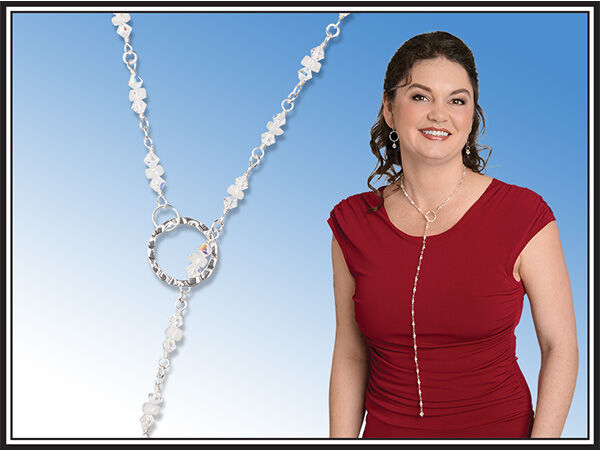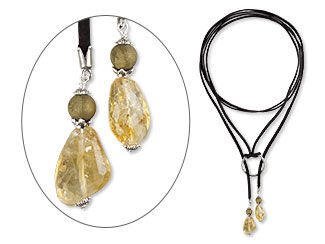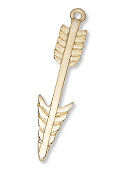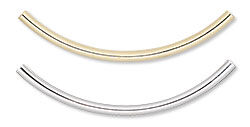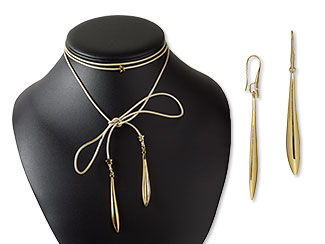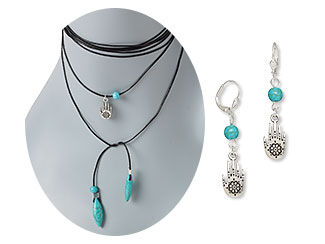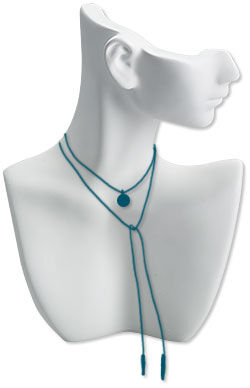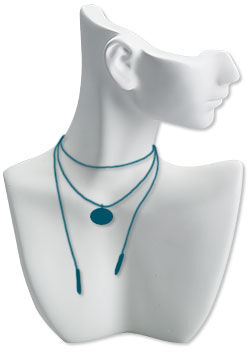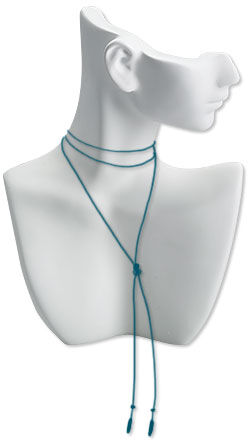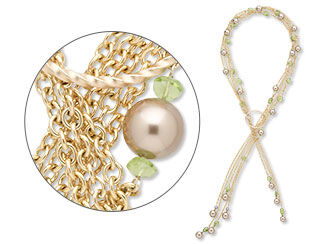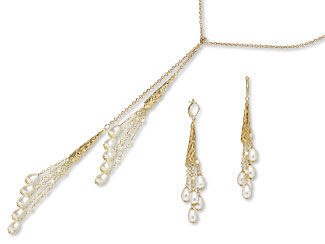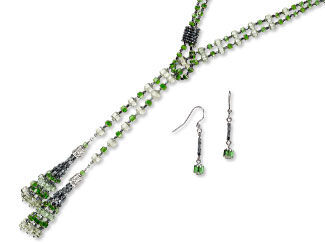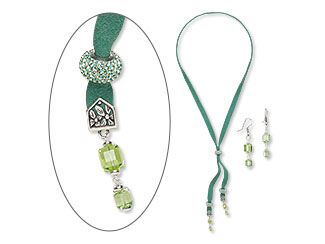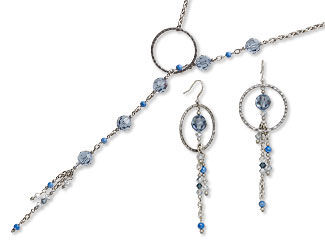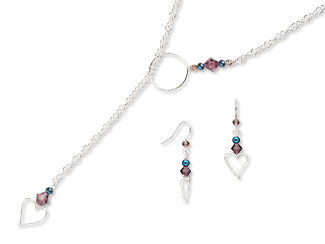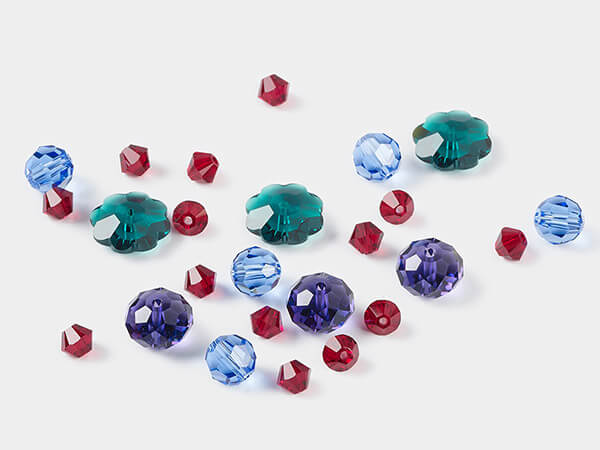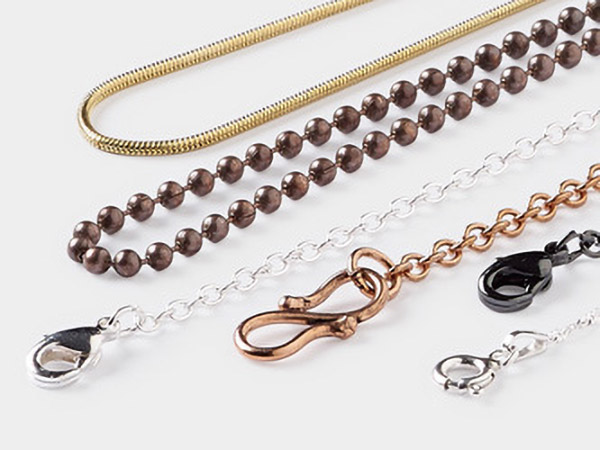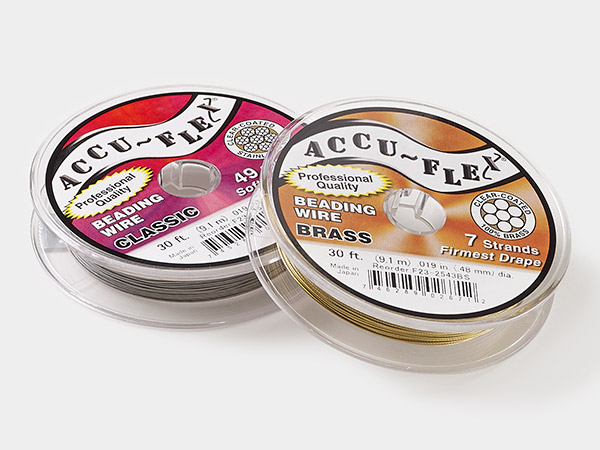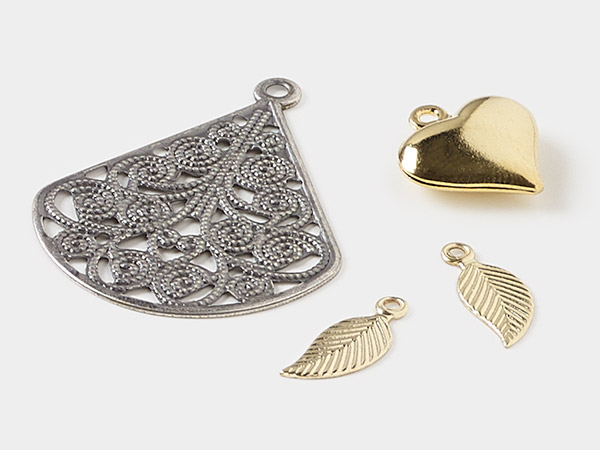'Round and 'Round We Go: Lariat Necklaces and Wrap Chokers
Jewelry has always been more than mere adornment; it serves as a form of expression, a statement of style and often, a symbol of deeper meanings and traditions. Among the multitude of jewelry styles, wrap chokers and lariat necklaces stand out for their unique designs and versatile uses. Let's explore these fascinating pieces and how they can enhance both everyday wear and special occasions.
Style Spotlight
What is a Lariat?
A lariat necklace is a long line or string of materials—usually measuring between 30 to 50 inches—without a clasp or closure. Each end of the length is often completed with a decorative element, such as a drop or tassel, instead. Some end with scarf findings, feathers, wire-wrapped components or other eye-catching details. This length and clasp-free state gives jewelry lovers style options they can’t experience with other styles.
The lariat necklace has surged in popularity, gracing the necks of Hollywood stars like Olivia Wilde, Cameron Diaz and Anne Hathaway. Originally making waves during the Roaring Twenties, this style of necklace is known for its elegance and versatility, which increases with the length of the lariat. This is why most stylists recommend making a lariat necklace a minimum of 30 inches long. One common length appears to be 42 inches (approximately 107cm), as characterized by the popular Zoe Lariat necklace by Stella and Dot. Additional length also increases a designer's opportunity to sell their pieces to a range of customer sizes.
What is a Wrap Choker?
Similar to lariats, the wrap choker is usually a bit shorter and known by many names, including "tie choker" and "wrap-around choker." No matter what you call it, this choker is simple in design, but so incredibly versatile, with dozens of ways to personalize how it's worn.
Choker necklaces were created all the way back in ancient civilizations as an adornment that protects the neck, a very vital part of the body. Similar to chainmaille's evolution, the choker has turned purely into a fashion statement. Chokers were made popular in the late 1800s by the Princess of Wales and saw a huge resurgence during the 1990s . Chokers continue to be a fashion staple now, with specific types enjoying increased and consistent popularity such as the wrap choker.
We'll cover some of the most popular materials and ways to embellish this cord choker, then offer you some of the most popular ways we've seen lariats and wrap chokers worn.
Get the Look | Materials
While lariats and wrap chokers can theoretically be made of anything, the material should be comfortable, since the idea is to wrap the necklace (sometimes multiple times) around the neck. One popular style for wrap chokers especially is a boho-inspired look, often made of soft materials. Suede lace and leather cord are the most popular, sometimes earning the name of suede choker. These soft, yet thick stringing materials allow you to easily tie (and just as importantly untie) the cord with ease, as well as add unique embellishments. Ribbons of varying materials, such as velvet, have also been seen as a base for these chokers.
Simple tie chokers are not overly adorned, instead taking on a bit of a minimalist look. Most commonly, the ends of the cord are finished with sleek metal cord ends or bolo tips. Small tassels have been seen dangling from the ends of tie choker cording as well as lightweight pendants such as leaves, feathers, arrows or blank long rectangles. Single gemstone beads are sometimes hung from these ends as well, or large-hole beads are kept on the ends by simply knotting around them.
Add half a dozen large-hole beads (that are small, smooth and won't be uncomfortable against the neck) without knotting so you can slide and position them while putting on your choker. Single long tube beads are also common to slide on. Smaller-size charms (such as those with affirmations) and drops with attached bails can also be added onto the cord before adding cord ends, which will then prevent anything from sliding off. The charm can then be moved to the desired location, depending on how you tie the length of cord. The simplicity of this style lends itself well to layering with other necklaces as well, such as chain, for a mix of textures.
On the other end of the spectrum, lariats and wrap chokers can be made of other materials, such as chain, strings of colorful glass or crystal beads, braided or knotted cord (think kumihimo or macramé), organic materials like wood, bone and horn or elegant gemstones. Really, your imagination is the only limit!
Wear the Look | Styling Ideas
So how do you wear a lariat or wrap choker, anyway? Literally any way you want! Wrap-around necklaces provide almost limitless versatility in how you want to wear the design each day. Who doesn't love options? Experiment to see which methods work best for varying clothing necklines.
The Basics
Here are a few simple ways to wear a wrap choker or shorter lariat:
- Wrap the cord a few times or all the way around your neck and then create a simple bow close to the base of the throat or that hangs near the clavicle. Tying bows is incredibly common and allows you to adjust the length of the cord depending on how small or large you make the bow.
- Wrap the cord once around the neck and then loop the ends over each over for a more lariat appearance.
- Wrap the cord multiple times around and allow the ends to hang (forward or backward).
- Tie a (not too tight) knot at a point along the cords. Some people get nervous about leaving the ends just dangling without a tie, so if open-ended isn't your style, try this technique.
Of course, if you absolutely love one style, you'll always wear it that way and you don't want to deal with looping, tying and untying, you can add a clasp to the back of the cord.
Depending on how else you accessorize, you can create distinctly Western, boho or other style vibes. We've noticed quite a few floppy, wide-brim hats as an additional accessory to the wrap-around choker look.
More Styling Ideas
Here's a list of 20 other fun ways to wear a long lariat (the longer the better!):
1. Drape: This is the absolute basic way to wear a lariat, just drape or hang it around the back of your neck so both ends dangle down the front. This style can also be worn with the ends dangling down the back, giving a look vaguely reminiscent of reins.
2. Flip: Create the Drape, then cross the dangling ends and flip them over each other loosely. The weight of the embellishments at the ends should keep this in place. Again, this can be worn with the flip to the front or dangling down the spine.
3. Wrap: Building on the Drape, the Wrap coils once around the neck, with both ends dangling down the front—or down the back! The single wrap can rest on the collarbones, or higher on the neck as a choker.
4. Wrap Flip: Create the Wrap, then flip the dangling ends over each other loosely as you would in the Flip. Adjust it low on the collarbones or in the décolletage—or high on the neck like a choker.
5. Overhand Knot or "Flapper Style": Create the Wrap, then tie the dangling ends together with a loose overhand knot. Again, this can be worn with the knot to the front or dangling down the spine.
6. Loop Knot: Create the Drape, then make a loose, open loop at one end of the lariat. Pass the other end through the loop, then tug into place to tighten. Wear either to the front or back.
7. Bow: Just like tying your shoelaces! Tie a knot and let the bow dangle. It almost looks like a big tassel on its own.
8. Loop: Fold the lariat in half, then drape around the neck so the loop hangs on one side and the ends hang on the other. Insert both ends through the loop and adjust snugness up the neck. Can be worn on the collarbones—either straight down the front or off to the side—or high on the neck like a choker. Wear with the ends down the front—or down the back!
9. Pretzel: Create the Loop, then insert one end through as you would in the loop. The other end passes back through the loop from the opposite side, so they dangle down each side of the loop. The strands cross over like a pretzel.
10. Long or Chain: Create the Drape, then gently knot the ends together. Put the knot around the back of the neck to give the appearance of a long continuous strand or chain.
11. Pendant Double-Strand: Create the Double-Strand or Layer, then pin a brooch over the front and center of the lower loop—or add a pendant using a bead hanger, pearl enhancer or any other removable bail. Some brooches can be attached over both strands together. Add two smaller brooches for the appearance of a double necklace. Adjust the two strands according to preference, only keep the knot in the back.
12. Tie Across the Forehead, 1970s style, and let the long ends dangle down the back or at the temple.
13. Tie Around the Head, pass under the hair and knot at the nape of the neck.
14. Tie Around the Head over the hair and knot loosely at the back of the head.
15. Wrap Around the Wrist, then tuck each end under the preceding loop for a memory wire bracelet look.
16. Wrap Most of the Length Around the Wrist, then create the Flip, Loop Knot or Pretzel around the wrist instead of the neck. Let the ends dangle.
17. Drape Around Middle Finger, then cross over back of hand to wrist. Wrap around wrist and tie off length with a Flip, Loop Knot or Pretzel.
18. Armband: Create the Flip, Loop Knot or Pretzel around the upper arm instead of the neck.
19. Belt: Create the Flip, Loop Knot or Pretzel around the waist instead of the neck.
20. Anklet: Any way a lariat can be worn as a bracelet, it can also be worn as an anklet—including wrapping around one toe like barefoot sandals (also called soleless sandals).
Versatility, adaptability and creativity—they're what makes the lariat or wrap choker an increasingly popular jewelry option. Be sure to add this necklace style to your jewelry stock and you'll loop in customers.
Have fun making it all your own!
Shop for Your Materials Here:
Have a question regarding this project? Email Customer Service.
Copyright Permissions
All works of authorship (articles, videos, tutorials and other creative works) are from the Fire Mountain Gems and Beads® Collection, and permission to copy is granted for non-commercial educational purposes only. All other reproduction requires written permission. For more information, please email copyrightpermission@firemtn.com.
